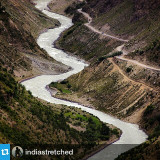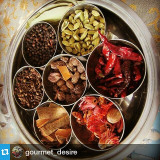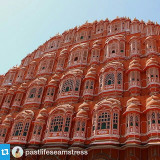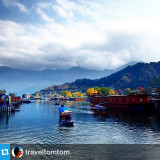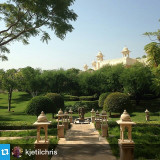Random image from our India photo collection
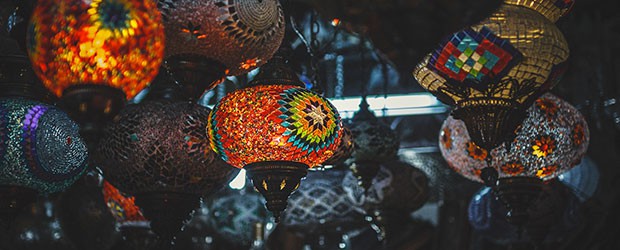
Delhi
Other Places Of Tourist Interest
The National Museum houses one of the largest collections of Vedic and pre-Vedic relics, exotic paintings, old manuscripts, and mural paintings from Buddhist shrines in Central Asia.
On the bank of the legendary Yamuna, which flows past Delhi is Raj Ghat, the last resting place of Mahatma Gandhi, the father of the nation.
Safdarjung Road, once the permanent residence of the prime ministers of India, now houses the Indira Gandhi Museum. Here, amongst other memorabilia, lies her saffron bullet-ridden sari, the burn marks clearly visible even through the glass case. It was here at this table that she had her last breakfast, walked out through this door, along the flag stoned path shaded by greenery, towards the wooden gate where she was shot brutally by a number of rounds of bullets from her own security guards. Visitors stand in numbers at the gate shocked into silence, re-living the treachery and the tragedy.
The Lodi Gardens are a popular retreat for a wide cross-section of Delhiites who enjoy jogging, quiet walks, picnics, naps under the shade of spreading trees or bushes, basking in the winter sun, or simply enjoying the especially relaxing atmosphere.
Chanakyapuri is the diplomatic headquarter where major pieces from other parts of the world have been transplanted. Here one can find the American Embassy, the British High Commission, and the embassies and missions of most other countries big or small that have diplomatic ties with India. Most of the countries represented, have introduced remarkable architectural designs and highly unique interior designs.
At the center of the city is India Gate. India Gate is a memorial raised in honor of the Indian soldiers who were martyred during the Afghan war. The green, velvety lawns at India Gate are a popular evening and holiday rendezvous for the young and old. Ice-cream carts, popcorn and peanut vendors, balloon sellers, carts selling cold water and cold drinks, panwallahs, people selling sweet-scented jasmine garlands and others, do quick business at the lawns.
The Mughal Gardens at the Rashtrapati Bhawan has an amazing assembly of roses in perfect bloom—perhaps the best in the whole of India. Flower shows are organized on a regular basis here and help encourage gardeners and plant nursery owners to display their magnificent flowers.
Rashtrapati Bhawan was once the majestic residence of the British viceroys. Built on the Raisina hills of Delhi ridge, this 340-roomed structure has an imposing character overlooking India Gate and Rajpath. It is now the official residence of the president of India.
The Vigyan Bhawan is a site that has hosted some of the most important international events and summits. There is the sense of history, tangled with pride as one goes past the Parliament House, the inquisitiveness as you glance at the North and South Blocks—the decision-making, bureaucratic heart of India.
Birla Mandir, a Hindu temple dedicated to Lord Vishnu situated in central Delhi, and the Lotus Temple, a beautiful white marble building and a place of worship for Bahai’s, are two temples worth visiting, which provide spiritual rejuvenation.
The Jantar Mantar is one of the astronomical observatories constructed by Sawai Jai Singh of Jaipur, and is situated in the center of the city near Connaught Place.
Since time immemorial, the Yamuna has flowed past Delhi. Displaying different moods—sometimes a gentle rhythm or a gentle whisper, at times a gentle lapping of water, and in the monsoons, the fury of its roars-the Yamuna has remained indestructible.
Today, the river has changed course. But as you drive along Ring Road you can still get a glimpse of the glitter of the Yamuna, as it flows past Delhi. This ageless river symbolizes the lasting soul of Delhi—enshrining the past, reflecting the present with all its contrasts and harmony, moving towards a rendezvous in the future.
Go back
On the bank of the legendary Yamuna, which flows past Delhi is Raj Ghat, the last resting place of Mahatma Gandhi, the father of the nation.
Safdarjung Road, once the permanent residence of the prime ministers of India, now houses the Indira Gandhi Museum. Here, amongst other memorabilia, lies her saffron bullet-ridden sari, the burn marks clearly visible even through the glass case. It was here at this table that she had her last breakfast, walked out through this door, along the flag stoned path shaded by greenery, towards the wooden gate where she was shot brutally by a number of rounds of bullets from her own security guards. Visitors stand in numbers at the gate shocked into silence, re-living the treachery and the tragedy.
The Lodi Gardens are a popular retreat for a wide cross-section of Delhiites who enjoy jogging, quiet walks, picnics, naps under the shade of spreading trees or bushes, basking in the winter sun, or simply enjoying the especially relaxing atmosphere.
Chanakyapuri is the diplomatic headquarter where major pieces from other parts of the world have been transplanted. Here one can find the American Embassy, the British High Commission, and the embassies and missions of most other countries big or small that have diplomatic ties with India. Most of the countries represented, have introduced remarkable architectural designs and highly unique interior designs.
At the center of the city is India Gate. India Gate is a memorial raised in honor of the Indian soldiers who were martyred during the Afghan war. The green, velvety lawns at India Gate are a popular evening and holiday rendezvous for the young and old. Ice-cream carts, popcorn and peanut vendors, balloon sellers, carts selling cold water and cold drinks, panwallahs, people selling sweet-scented jasmine garlands and others, do quick business at the lawns.
The Mughal Gardens at the Rashtrapati Bhawan has an amazing assembly of roses in perfect bloom—perhaps the best in the whole of India. Flower shows are organized on a regular basis here and help encourage gardeners and plant nursery owners to display their magnificent flowers.
Rashtrapati Bhawan was once the majestic residence of the British viceroys. Built on the Raisina hills of Delhi ridge, this 340-roomed structure has an imposing character overlooking India Gate and Rajpath. It is now the official residence of the president of India.
The Vigyan Bhawan is a site that has hosted some of the most important international events and summits. There is the sense of history, tangled with pride as one goes past the Parliament House, the inquisitiveness as you glance at the North and South Blocks—the decision-making, bureaucratic heart of India.
Birla Mandir, a Hindu temple dedicated to Lord Vishnu situated in central Delhi, and the Lotus Temple, a beautiful white marble building and a place of worship for Bahai’s, are two temples worth visiting, which provide spiritual rejuvenation.
The Jantar Mantar is one of the astronomical observatories constructed by Sawai Jai Singh of Jaipur, and is situated in the center of the city near Connaught Place.
Since time immemorial, the Yamuna has flowed past Delhi. Displaying different moods—sometimes a gentle rhythm or a gentle whisper, at times a gentle lapping of water, and in the monsoons, the fury of its roars-the Yamuna has remained indestructible.
Today, the river has changed course. But as you drive along Ring Road you can still get a glimpse of the glitter of the Yamuna, as it flows past Delhi. This ageless river symbolizes the lasting soul of Delhi—enshrining the past, reflecting the present with all its contrasts and harmony, moving towards a rendezvous in the future.
Go back


